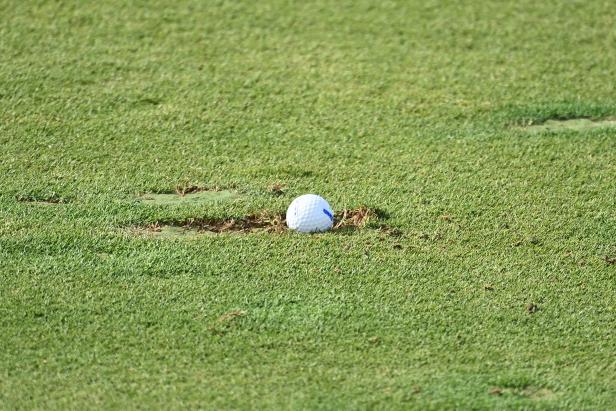Golf
Rules Review: It’s one of the most loathed rules in golf. So why again can’t you take free relief from a divot hole?

Whether you’re new to the game or have been playing it for years, you’ve probably experienced the deflating feeling of hitting a great drive that splits the fairway only to find once you’ve gotten to your ball that it’s sitting in a hole created by someone else’s shot. Although not impossible to play out of—you can read Butch Harmon’s advice on how to do it here—it’s still a frustrating situation. You did everything right, yet it feels like you’re being unjustly penalized.
It’s at those moments when you might wonder why the Rules of Golf doesn’t allow you to take free relief. After all, Rule 16.3 allows you to remove an embedded ball anywhere in the general area of the course without penalty. How is this any different, you might wonder?
Let’s have Craig Winter, Senior Director of Rules of Golf and Amateur Status for the USGA, explain:
“It’s fundamental to golf to play the ball as it lies,” he says. “And you don’t always get a good lie.”
Although the USGA and R&A, golf’s governing bodies, have considered on various occasions handling divot holes in another manner, there is no “practical solution” other than to leave it as just a part of the game, Winter says. If you think about it beyond the moment you’re in one, how often does it happen to you in any golf season? Probably not a lot. Furthermore, if the rules makers were to treat divot holes as, say, ground under repair, think of how many spots on the fairway would then fall into that category? They’re all over the place. They take a long time to heal, and they typically are not a focus of normal golf-course maintenance.
For these reasons, don’t expect the “play it as it lies” fundamental to change anytime soon, if ever. Winter says new members of the rules committee want to discuss it from time to time, but it doesn’t go beyond that.
“Philosophically, it’s hard to think of a different way we’d want to go,” he says.
And remember the next time you’re in one, things could be worse. Just ask Jordan Spieth about his Sunday round at the Sentry Tournament of Champions in January. He found his ball in a divot crater on three consecutive holes down the stretch!
“The [divots] were certainly tough breaks because they were balls that hit in the fairway and funneled into them,” Spieth said. “Out here, balls funnel into the same spots a lot. It’s not uncommon to be in divots. It kind of stunk that it was three holes in a row, but I still played [them] just fine.”










